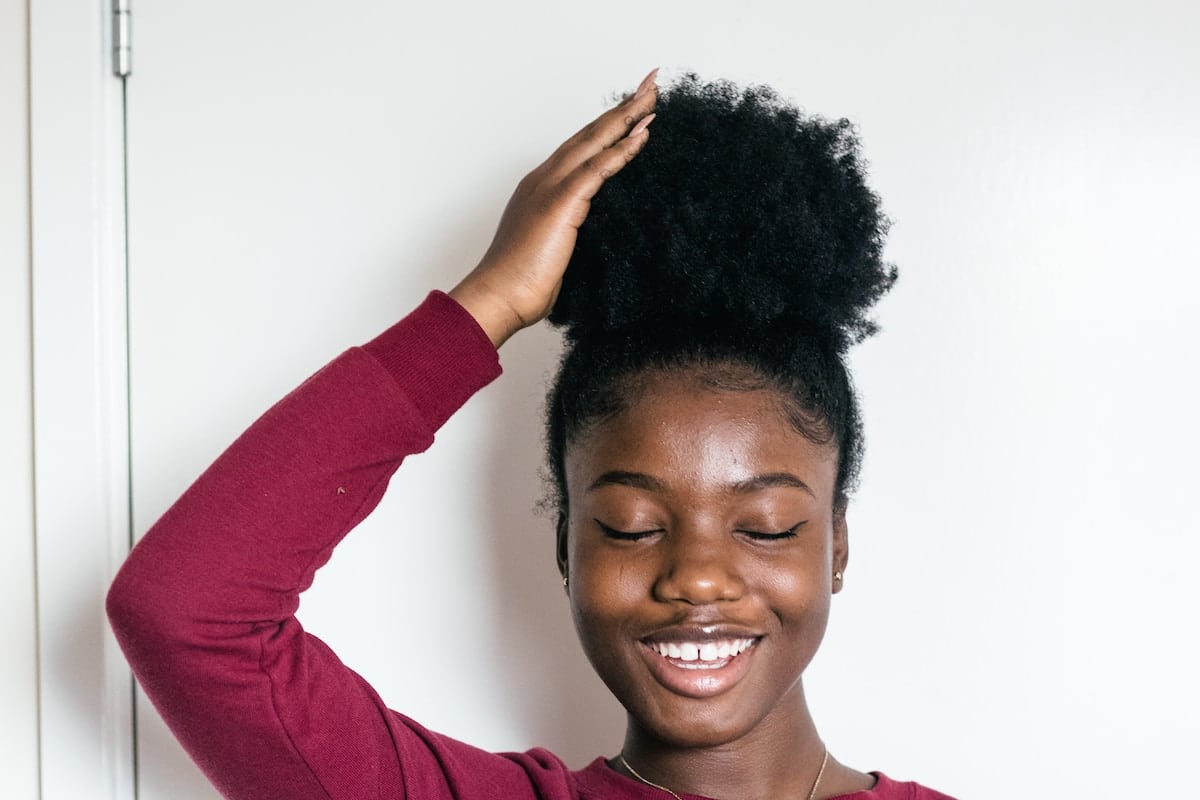Alopecia, the medical term for hair loss, can occur for a variety of reasons, ranging from genetic factors to skin conditions and hormonal imbalances. Among the different types of alopecia, traction alopecia is specific and often unrecognised. However, if ignored or poorly treated, it can lead to permanent hair loss. Causes, symptoms, preventive and curative approaches... Find out all you need to know about traction alopecia.
Traction alopecia: what is it?
Traction alopecia is a form of hair loss caused mainly by excessive and continuous traction or tension on the hair follicles. It is associated with certain hairstyles or hair practices that pull or tension the hair for long periods of time.
Hair loss resulting from traction alopecia occurs on specific areas of the scalp, unlike androgenetic alopecia which can affect a large area of the scalp.
Traction alopecia is also non-scarring in nature. However, if the tension exerted on the hair is too strong and lasts too long, the hair follicles can be permanently damaged. As a result, the hairline can move back 8 to 10 centimetres, leaving the forehead hairless.
What causes traction alopecia?
Traction alopecia is caused by excessive and prolonged tension or pulling on the hair. This tension damages the hair follicles, which can lead to hair loss. Excessive traction can be caused by a number of different factors.
Tight hairstyles
When a hairstyle is too tight, it exerts continuous traction on the hair roots. This constant tension can put stress on the hair follicles, weakening them over time. For example, braids, when done very close to the scalp and with excessive tension, can cause not only immediate pain but also long-term damage. Similarly, a ponytail or tight bun can put pressure on specific areas of the scalp, such as the back of the head or the temples, areas that are often sensitive to pulling.
Hair extensions
Hair extensions are widely used to add volume, length or styling variation to natural hair. They can exert continuous pressure on the roots of natural hair, especially if they are attached to fine or fragile hair. In addition, certain application methods, such as weaving or gluing, immobilise natural hair, making it vulnerable to pulling. Finally, improper removal of these extensions can pull out natural hair.
Chemical treatments
Chemical treatments, such as relaxers, perms and colourings, are frequently used to alter the texture, shape or colour of hair. Although traction alopecia is mainly associated with physical tension exerted on the hair, the use of chemical treatments can increase the hair's susceptibility to traction, thereby increasing the risk of traction alopecia.
Who is most affected by traction alopecia?
Traction alopecia mainly affects people who regularly subject their hair to hairstyles or treatments that exert constant tension on the scalp. Because of the popularity of this type of hairstyle in many African and Afro-Caribbean cultures, Afro-descendant women may be particularly at risk.
Also, regardless of ethnic group, people who frequently use extensions, especially if they are heavy or too firmly attached, are at risk.
Although less common, some men who wear hairstyles that exert tension, such as dreadlocks, plaits or buns, can also be affected.
Traction alopecia: what is the remedy?
The best approach to tackling traction alopecia is preventative. However, once you have identified the problem, other remedies and treatments can be considered.
Avoid traction
Limit tight hairstyles such as braids, buns, ponytails and dreadlocks, and opt instead for loose hairstyles that don't put pressure on your scalp.
If you like to wear extensions or weaves, it is crucial to have them fitted by a professional who knows how to minimise tension on the scalp, and to remove or adjust them regularly in order to avoid excessive pressure.
Good to know: when detangling, using a wide-tooth comb and a detangler on wet hair can help reduce breakage.
Medicated topicals
Medicated topicals are preparations designed to be applied directly to the skin or scalp to treat a variety of skin problems.
In the context of traction alopecia, these drugs play an essential role in promoting hair regeneration and reducing the inflammation associated with this type of alopecia. Among the most commonly recommended topical treatments is Minoxidil.
Available over the counter, Minoxidil is known to stimulate hair growth and strengthen existing follicles, offering a non-invasive solution for many patients suffering from hair loss.
Other topicals, such as corticosteroids, are also used to treat traction alopecia. As with any drug treatment, it is essential to consult a healthcare professional to determine the most appropriate treatment.
Natural treatments
Scalp massage is a popular natural technique. By improving blood circulation, they can revitalise hair follicles, providing the right conditions for new growth. Combining a gentle massage with the application of a serum can maximise the benefits.
The importance of diagnosis in combating traction alopecia
Because traction alopecia sets in gradually, the first signs are easily overlooked or misinterpreted. However, early identification of this alopecia is crucial in preventing irreversible hair loss. This is where the importance of diagnosis lies.
In the early stages of traction alopecia, hair loss is often temporary and hair can grow back once the tension is removed. However, if the situation is left unattended for an extended period, damage to hair follicles can become permanent, making it impossible to regrow hair.
An accurate and rapid diagnosis can distinguish traction alopecia from other forms of alopecia. In fact, although the symptoms may overlap with other types of hair loss, the treatment and preventive measures differ considerably.
Centre Clauderer, with its recognised expertise in the field of hair care, offers diagnostics in Paris or remotely. Benefit from a complete assessment carried out by dedicated specialists and obtain an anti-hair loss treatment tailored to your hair's precise needs.

